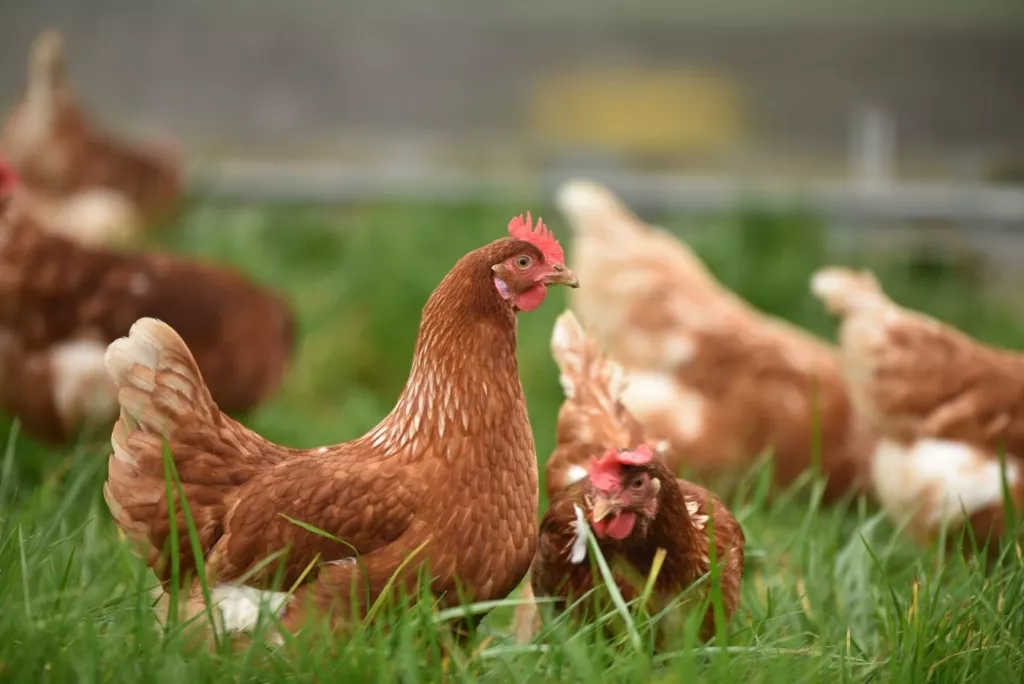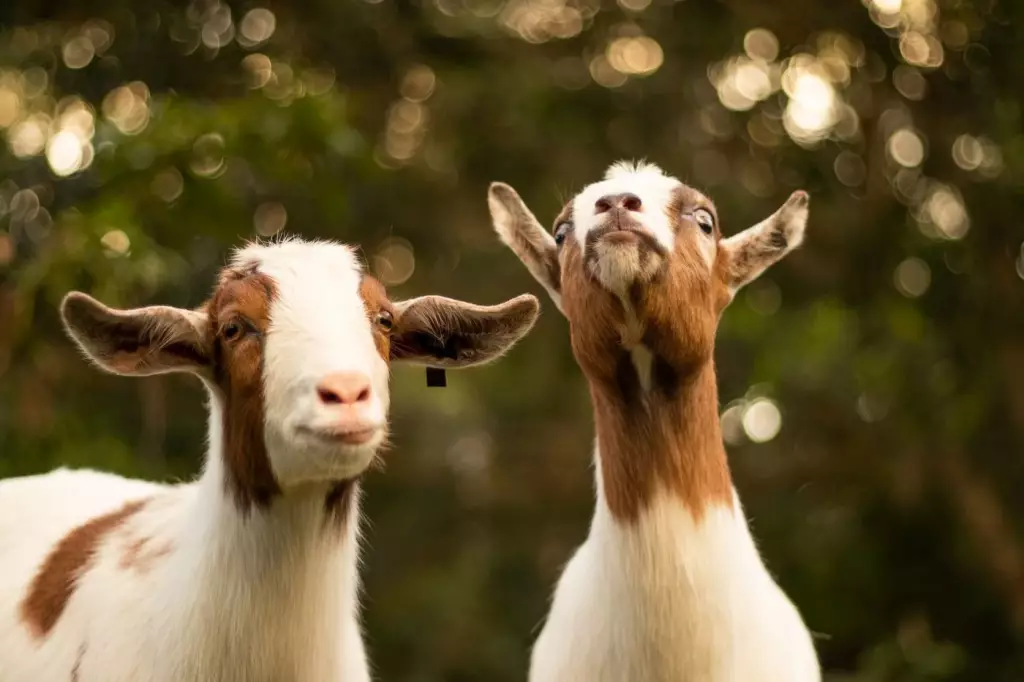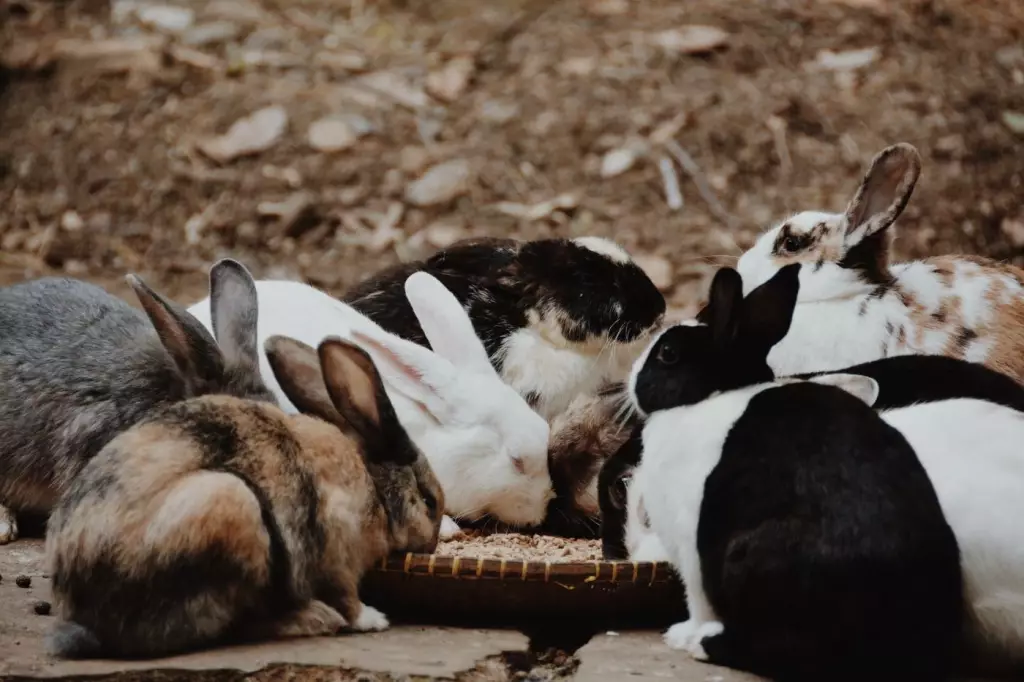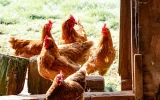Best Animals to Raise on Just 1 Acre of Land Or Less
There are the most profitable crops for small farms, and there are also the best livestock to raise on a small plot of land. If you want to make the most of raising livestock on your farm, you came across the right article. In this article, we’ll let you know which animals are best to raise on just 1 acre of land or less.
The best animals to raise on your small plot are chickens, ducks, quail, small goats, sheep, pigs, bees, and rabbits. All these animals can be kept and set up in your limited space, but before purchasing any of them, you must keep in mind the zoning regulations in your area.
Now before you delve into setting them up on your land, let's find out what to consider, such as the space needed by the animals, how much they produce, how much it will cost to raise them, and a few other things.
Summary
- Chickens, ducks, quail, small goats, sheep, pigs, bees, and rabbits are some of the best animals that can be raised on a 1-acre lot or less.
- Most of the best animals that can be raised in a limited space are small but profitable.
- There are a few considerations to assess before purchasing your animals of choice, such as zoning regulations and characteristics special to each animal that may cause issues down the line.

Best Animal Choices for Your Small Farm
How much land you have will determine what animals you can keep on your farm. Although most farmers opt to allot more space for the crops if their plot size is limited, some tend to keep a few well-known livestock animals, such as chickens.
Below is a list of the best farm animals for your 1-acre land or less:
1. Chickens are a top choice to raise on small acreage
| Variable | Rating |
|---|---|
| Space needed | 🟊🟊🟊🟊🟊 |
| Produce | 🟊🟊🟊🟊🟊 |
| Cost to raise | 🟊🟊🟊🟊🟊 |
| Consideration | If you plan to raise roosters, be wary because they are not allowed in some urban areas due to their noisy crowing |
| Overall | 🟊🟊🟊🟊🟊 |
Chickens only need 2-3 square feet inside the coop and 8–10 square feet in an outside run. Hens produce a steady supply of eggs, which means you can have an endless supply of both eggs and chickens, especially if you use an incubator. Pasture-raised eggs can sell for $4 to $6 per dozen.
Aside from being profitable, chickens are good at keeping pests at bay. They eat mosquito eggs and spiders as well. Setting up chickens on your land, including their fence, costs under $500 on average. The day-to-day costs can be as low as $22 per month.
2. Ducks are a good option for raising on a small plot area
| Variable | Rating |
|---|---|
| Space needed | 🟊🟊🟊🟊🟊 |
| Produce | 🟊🟊🟊🟊🟊 |
| Cost to raise | 🟊🟊🟊🟊🟊 |
| Consideration | Ducks are messy and will require lots of water |
| Overall | 🟊🟊🟊🟊🟊 |
Ducks only require four square feet of coop space per bird and some space to run outside, which means they don’t take up as much space as chickens. The male ducks also make less noise, so they are more neighbor-friendly than roosters. They are also a lot heavier, which disables them from flying but makes them an ideal source of meat.
Ducks can grow fast, can fend for themselves in 6–9 weeks, and can lay an average of 140 eggs per year. In a year, the cost to raise them varies from around $250 to $300, depending on how many ducks you are keeping.
3. Quails are good to raise on small land areas
| Variable | Rating |
|---|---|
| Space needed | 🟊🟊🟊🟊🟊 |
| Produce | 🟊🟊🟊🟊🟊 |
| Cost to raise | 🟊🟊🟊🟊🟊 |
| Consideration | Quails don’t have as much meat as chickens |
| Overall | 🟊🟊🟊🟊🟊 |
What makes quail a good choice for small plots is their much smaller size compared to other birds. They also make very little noise. Since they are small, they eat less and use less bedding, which lowers the cost of raising them.
Quail mature quickly and can begin laying eggs in six weeks. In areas where chickens are prohibited, you can keep quails instead. You can keep up to 500 quail in your small land area and make a good profit out of them.
4. Dwarf goats are one of the best animals to raise in small spaces.
| Variable | Rating |
|---|---|
| Space needed | 🟊🟊🟊 |
| Produce | 🟊🟊🟊🟊🟊 |
| Cost to raise | 🟊🟊🟊🟊 |
| Consideration | Dwarf goats need at least 20 feet of grazing area |
| Overall | 🟊🟊🟊🟊 |
Raising goats has been particularly common on farms. But if you have a smaller space, you may consider raising dwarf goats instead. They are small, social animals that enjoy being around people and other animals.
Although they require at least 5 to 6 square feet of living space and a 20-foot grazing area, they are worth having in your limited space because of their profitability. Their meat and milk can be sold, and you can make goat cheese from their milk too. When they reproduce, you can sell the kids for at least $200 each.

It is said that two goats can earn you between $1,000 and $2,000 per year. The cost of keeping a single goat may range from $200 to $300 if you are feeding them all year round.
5. Sheep can be raised on just an acre of land.
| Variable | Rating |
|---|---|
| Space needed | 🟊🟊🟊 |
| Produce | 🟊🟊🟊🟊🟊 |
| Cost to raise | 🟊🟊🟊🟊 |
| Consideration | Sheep are difficult to milk; have complex needs when it comes to lambing |
| Overall | 🟊🟊🟊🟊 |
When it comes to having multiple purposes, sheep may be the perfect animals. They produce very valuable wool and can also produce great meat and high-quality milk. They will, however, need a lot of space.
A mature female sheep, also called an "ewe,” requires a living space between 12 and 16 square feet. A lambing pen will need between 16 and 25 square feet of space. Unfortunately, sheep are not the friendliest of animals, and they often get easily anxious, so milking them will sometimes get you kicked or attacked.
The good thing about sheep, however, is that they are not picky eaters, so they’re relatively low maintenance. The cost of feeding a sheep is more or less $1,000 per sheep annually.
6. Pigs can be raised on a small piece of land.
| Variable | Rating |
|---|---|
| Space needed | 🟊🟊🟊 |
| Produce | 🟊🟊🟊🟊🟊 |
| Cost to raise | 🟊🟊🟊🟊 |
| Consideration | Pigs are quite dangerous and can be aggressive when not handled properly |
| Overall | 🟊🟊🟊🟊 |
Pigs are not active animals, and their routine usually revolves around sleeping and eating; therefore, the required plan for keeping pigs is around 8 square feet of space per pig. There are many available breeds of pigs, but for limited spaces, it’s best to opt for Berkshire pigs, which are relatively small and versatile.
When it comes to breeding, you can get at least 8 to 10 piglets every 4 to 5 months, and each piglet can sell for more than $100. If you have 15 to 20 piglets in a year, you can earn as much as $1,500 to $2,000 per year.
Pigs eat about anything, even leftover foods from humans, so the cost of feeding them is low. Although they are adorable, they can be aggressive if mishandled. Cleaning their space is also required every now and then.
7. Bees are a good choice to keep on your 1-acre land.
| Variable | Rating |
|---|---|
| Space needed | 🟊🟊🟊🟊 |
| Produce | 🟊🟊🟊🟊 |
| Cost to raise | 🟊🟊🟊 |
| Consideration | Bees can sting, and you will need plenty of knowledge to make them profitable; they are also subject to predator attacks |
| Overall | 🟊🟊🟊🟊 |
Bees are usually kept on farms as an additional source of income and to promote pollination. Hobby farmers usually start beekeeping with just 1–2 acres of land. Although bees are not livestock animals, they are valuable on any farm, especially on small acreages.
Aside from being good pollinators, bees produce honey, beeswax, and other bee by-products that are useful to humans and can be sold at valuable prices. The startup costs for setting up bees on your small farm can range from $600 to $700, and this hinders farmers from pursuing beekeeping.
Aside from this, beekeeping requires knowledge, especially if you’re a novice beekeeper, to be able to protect your bees from predator attacks and protect yourself from being stung.
8. Rabbits are a great option for small farms.
| Variable | Rating |
|---|---|
| Space needed | 🟊🟊🟊🟊🟊 |
| Produce | 🟊🟊🟊🟊🟊 |
| Cost to raise | 🟊🟊🟊 |
| Consideration | Rabbits can be messy and smelly |
| Overall | 🟊🟊🟊🟊🟊 |
Rabbits are a great choice for farms with limited space because they are small and have many breeds to choose from. They don’t take up much space, which makes them ideal for urban homesteaders. Rabbits that are less than 5 pounds only require 1 to 2 square feet, while those weighing 11 to 12 pounds will need at least 5 square feet.
Rabbits grow fast and breed quickly. They can produce 6 to 10 bunnies each month. They produce a healthy meat option and a highly sought-after fiber called “angora wool”.
In a year, you can make an estimated $4,000 from rabbit meat. Rabbits also tend to produce a lot of manure, which is a good organic fertilizer that can be sold to local gardeners. You can also breed and sell rabbits as pets.

The cost of raising rabbits, however, is quite high, ranging from $600 to $1,100 per year. They can also be messy and often smelly, but this can be reduced by adding fresh new bedding each time.

